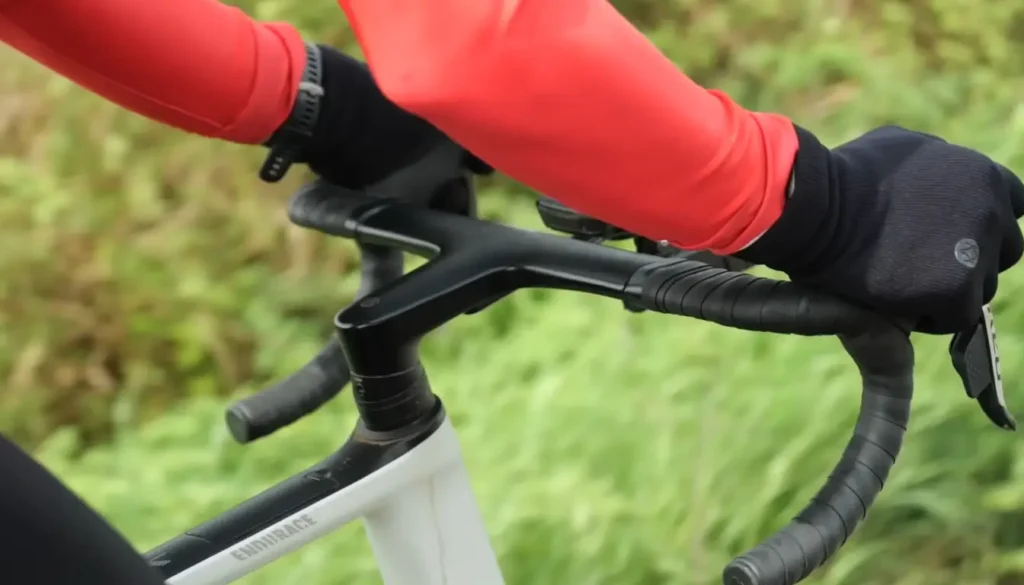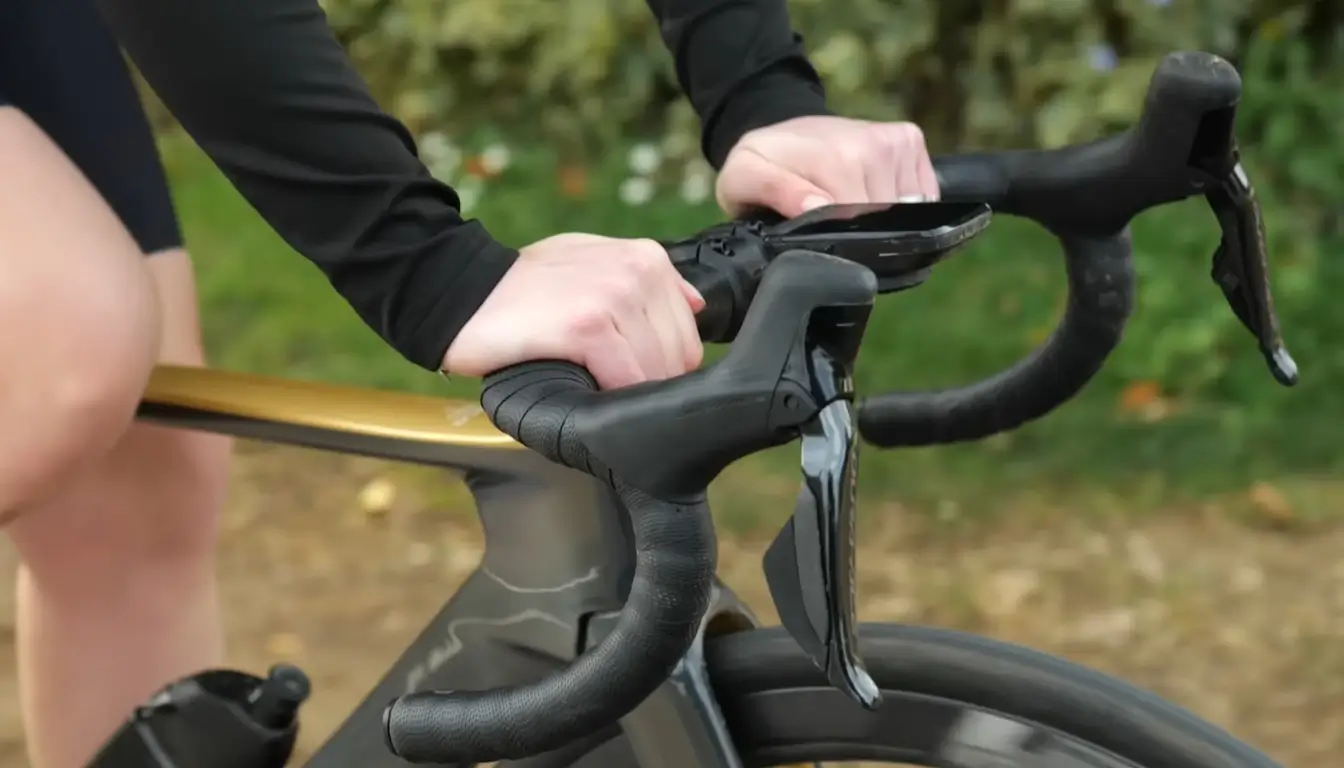A lot of factors play a role when hands fall asleep during mountain biking. Some of these may be lousy hand posture, bad weather, or worse, damaged nerves.
If you’re not following proper instructions, you will often find your hands going numb as your mountain ride. Hands being numb or falling asleep is one of the most common problems riders face.
Being comfortable with your body, head-to-toe is essential while mountain biking. You will be speeding up and going through rough trails if your body is not at its 100%; you won’t reach your mountain biking potential and will neither have fun.
This post goes in-depth at your issue, and we have a solution as well, Keep reading if you’re interested.
What Causes Hand Numbness While Riding?
Extreme pressure on nerves causes hand numbness. Mountain biking with excessive pressure on the hand hurts the median and ulnar nerves.
To simplify things, many tendons and median nerves go through a place called a “tunnel” inside your veins and underneath your wrist. When your hands grip the handlebars for too long with a firm grip, too much pressure gets created on the wrist, and your hands may “fall asleep” or, according to science, go numb.
The numbness caused by median nerves is called Carpel Tunnel Syndrome.
Ulnar nerves go through the pinky of your wrist. Gripping firmly on the handlebar causes your hand to go numb, leaving your pinky uncomfortable. If the grip is too strong, you might also get a tingling sensation around the ring finger. This is called handlebar palsy.
How to fix Handlebar Palsy?
Handlebar palsy or trauma caused by Ulnar nerves is very common among mountain bikers. However, unless the trauma is too severe, you may treat them quickly with the things you have lying around.
We made a list of the things you should do until you have to visit the doctor. If it’s too serious, check it out.
- Give proper rest to the traumatic area until it heals; avoid riding in the meantime, if possible.
- After the rest period, the inflamed area should be less. Now go for physical therapy if the injury is too severe.
- Do the physical therapy exercises regularly.
- After the area is completely healed, wear biking gloves on your hand during your next ride.
Surgery is very rare when it comes to handlebar palsy unless you have badly injured your hands.
Other Reasons Why Your Hands Might Be Numb
Excessive pressure on nerves is a major reason for hand numbness, but it’s not the only one. Here are some other reasons why your hands might be numb while riding:
- Bad Hand Posture
- Weather
- Sore hands
Everything has its own rules and regulations. You cannot grip a mountain bike as you would grip a car steering wheel. But if you try to do so, you will hurt yourself. Your hand posture and how you grip the handlebars are crucial while riding. If you’re feeling numb in your hands, check your grip posture.
Weather is another part that many people sleep on. Cool, rainy, and breezy weather may cause numb hands. As you are riding, the cold wind is going against you, causing your hands to be hard to the point that pressure is created on your nerves, leaving them to go numb.
You most likely have sore hands if you made a long journey the day before your riding session. This means your grip on the handlebar won’t be as smooth as yesterday. This is another reason the hands might go numb or just not cooperate with you.
How to Avoid Numb Hands While Riding a Mountain Bike?

Now that you’ve learned what causes your hands to be sore or numb. We are here with solutions on how you may prevent your hands from dying on you on your next ride.
1. Adjusting Body Posture
We have learned that handlebar palsy is caused by nerve pressure. So, change the gripping style if you notice your hands have a weird hard grip on your handlebar. Have a loose but firm grip on the handlebar, and relax your shoulders a bit.
Bending your elbows also helps in decreasing pressure.
2. Adjust your bike
Your bike might need tiny adjustments. First, test and see what is causing the soreness. Is it your seat placement? Is it the brake position? Once you find out, change accordingly.
3. Use gear
Using gear helps in preventing numbness. Wearing gloves while riding can significantly decrease your chances of being prone to hand numbness.
You may also use different grips to enhance the riding experience. It will help in decreasing the soreness.
4. Exercise
This is quite underrated when it comes to avoiding soreness. If you stretch your hands and exercise them regularly before and after each ride, your soreness will notably decrease.
5. Adjust your grip
Hand numbness occurs when you ride with the same grip for a long time. That’s when the body adjusts and “falls asleep.” You should switch up your grip and adjust the hands from time to time as you progress in the ride.
As you can see, preventing hands from being sore is easy. If you know the symptoms and what’s causing the problems, avoiding the consequences is not a problem.
Why Does My One Hand Fall Asleep during Mountain Biking?
If numbness occurs, on the one hand, it’s solely because of muscular differences. If your body is not in the proper position, you will find only one hand numb.
Let’s say you put your hips on the left side but put a load on the right hip more, and it will cause muscular imbalances and numbness. Most of these problems originate from the pelvis.
Your neck and shoulders might be uncomfortable during your ride, which also has a role in only one hand being numb.
If you notice only one of your hands falling asleep, check to see if you’re putting more tension on any particular muscle.
Conclusion
Hands being numb often occurs in riders. Sometimes riders even get scared as they don’t know what caused it and don’t know what to do to prevent it.
The steps are pretty simple. Knowing what caused it, for example, pressure on nerves, bad weather, posture, gripping style, etc. Knowing how to fix the causes and being careful beforehand can help you prevent this problem.
Who knows? Maybe you’ll help a buddy out on your next ride when they’re facing the same problem.

I am Ryan Ford, a mountain biking enthusiast who loves to explore the outdoors. I also like to go on adventures with friends and anything else that involves being outside. I love my bike because it gets me out of the house and gives me an opportunity to enjoy nature.

